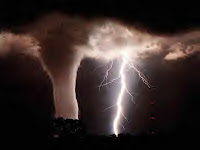By the time you read this, it may already have happened: The Standard & Poor’s 500-stock index may have passed 1,565, the October 2007 peak the market has been climbing toward since the financial crisis bottomed out in March 2009.
More than five years later, stocks seem to be standing on firmer ground. The housing market is rebounding, with home prices showing their largest year-over-year increases since 2006. Jobless claims dropped to a five-year low for the week ended Jan. 19. And stocks may be, if anything, undervalued: The price-to-earnings ratio of the companies in the S&P 500 stood at 14.9 on Jan. 30, below its average of 19.8 since 1990.
The flow of upbeat data has helped lure small investors, who fled stocks for the perceived safe harbor of bonds after the crisis—and missed out on a 123 percent gain since March 2009. Americans have poured $39 billion into equity funds since Jan. 1, according to asset tracker EPFR Global, after pulling out hundreds of billions from stock mutual funds since 2008. “Optimism is significantly returning to the market, and investors of all stripes are adding on to their equity positions right now,” says Eric Johnston, a managing director in equities trading at Barclays (BCS).
So what’s left to worry about? In a word, the Fed. Some economists are concerned about what will happen when the Federal Reserve eventually begins to scale back its $85 billion in monthly bond purchases, which have pumped money into the financial system, keeping interest rates down and nudging investors toward riskier investments such as stocks. Members of the Federal Open Market Committee began signaling in December that this round of quantitative easing, once nicknamed QE Infinity for its lack of an expiration date, could ebb well before the end of 2013.
Markets may react strongly to the first hint of reversal. “There is no pulling back a little,” says Drew Matus, senior U.S. economist at UBS (UBS). “It is always going to be hard to disengage in a very gradual manner.” Goldman Sachs Group (GS) President Gary Cohn voiced a similar concern at last week’s gathering of the economic elite in Davos when he warned that a sudden increase in interest rates would represent a “big risk,” potentially shocking the entire financial system. By raising the cost of borrowing, higher rates could crimp corporate profits and slow the housing recovery. For now, the Fed’s asset purchases will continue, the bank announced on Jan. 30, the same day the government said the economy shrank 0.1 percent last quarter.
Not everyone sees the eventual end of the Fed’s bond buying as a death knell for stocks. “It might be a confidence booster,” says James Paulsen, the chief investment strategist at Wells Capital Management. “Because if the last scaredy-cat Fed member goes, ‘Hey, you’re right, it’s looking a little better,’ that could increase private-sector confidence.”
Whether the Fed’s extraordinary behavior has been a bridge that got the economy to solid ground, or is itself a kind of bubble that will burst, is the central question that’s dividing bulls and bears today. The pessimistic view is that the return of average investors to the stock market is a negative bellwether, a signal that the “dumb money” has arrived and the rally is near its end.
The rosier stance is that the economy’s fundamentals are strong and the psychological trauma of the crisis has finally healed. Paulsen argues that the S&P’s high-water mark isn’t just another number on a chart but an inflection point for the way Americans see the economy. “The national financial conversation for four or five years has been, ‘Are you being conservative enough in this high-risk world?’ ” he says. “It’s going to change, if we break through 1,565 and we’re at all-time highs, to ‘Are you missing out?’ ”
The bottom line: Some say the rally that has lifted stocks 123 percent will end once the Fed stops its $85 billion monthly bond purchases.
With Craig Torres
